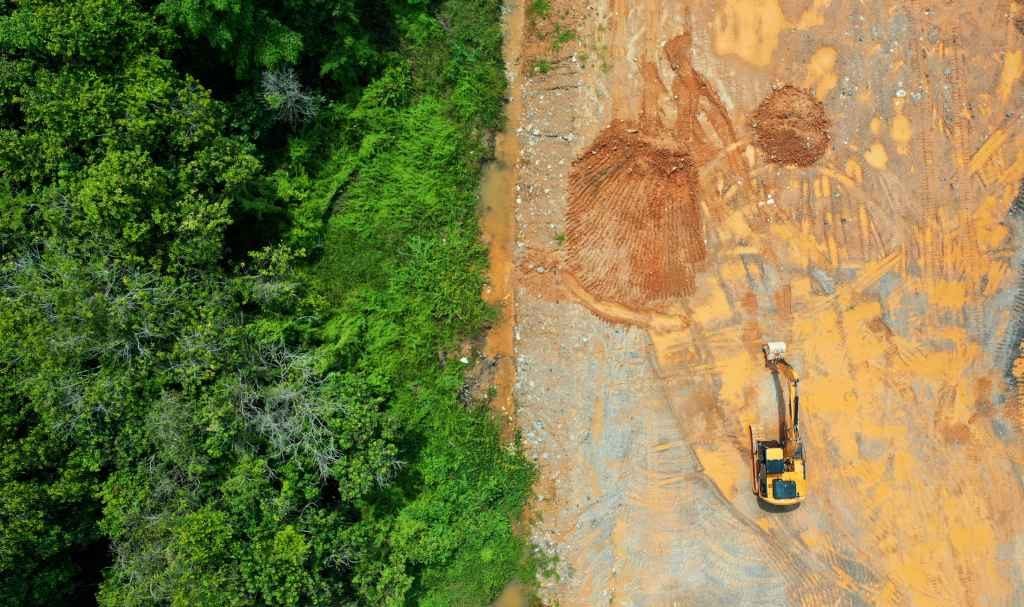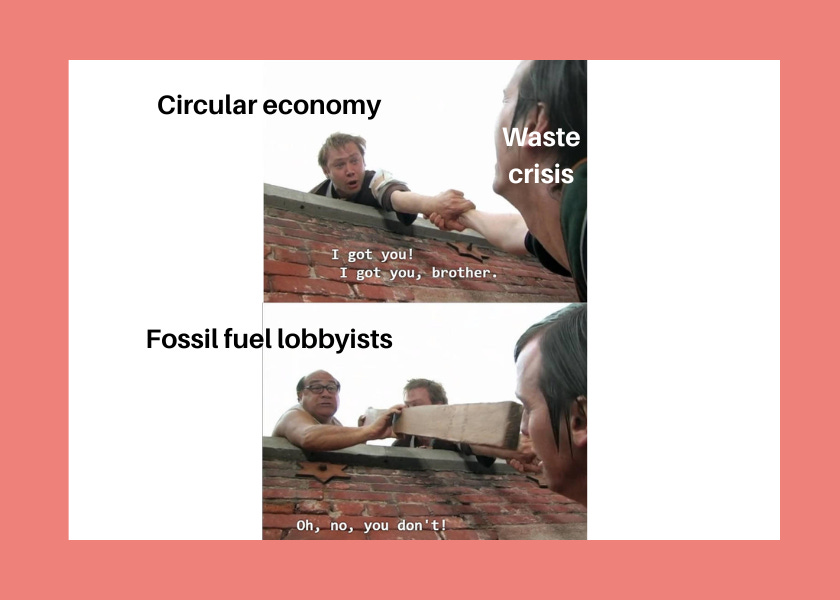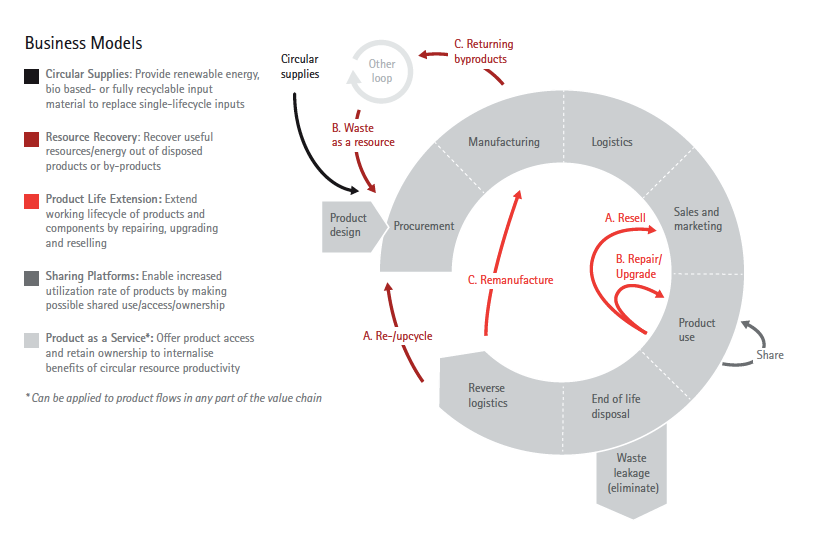Closing the loop: The business benefits of going circular
What’s good for the planet is good for business.
Growth has long been synonymous with a linear approach: take, make, waste.
It's been the golden ticket to success for centuries, as predictable as the seasons. But like a well-worn suit, this model is starting to show its age.
Resources are dwindling, costs are soaring, and Mother Nature is tapping her foot impatiently.
Enter the circular economy, stage left.
It's not just a trendy buzzword; it's the plot twist in the business narrative that's been building for years.
It's about making the most of what we have, turning waste into wonder, and growing in a way that doesn't leave the planet gasping for air.
Why business as usual is hitting a wall

Continued dependence on scarce natural resources for growth exposes a company’s tangible and intangible value to serious risks.
Let's break down why this old-school approach is stumbling:
Revenue roulette
Imagine throwing a party and running out of drinks. That's what businesses face when resources run dry. Supply hiccups can leave companies high and dry, unable to meet demand.
The cost climb
Remember when gas was cheap? Neither do we. As resources become scarce, prices go up fast. Companies stuck in the linear loop find themselves playing an expensive game of catch-up with competitors who've already jumped on the sustainability bandwagon.
Brand burnout
Nowadays, your environmental footprint is as visible as your logo. Consumers are becoming eco-detectives, and brands that can't prove their green cred are getting the cold shoulder.
Policy pushback
Governments are waking up and smelling the (sustainably sourced) coffee. They're starting to favour businesses that can prove they're not just taking from the planet but giving back too.
The future belongs to those ready to close the loop and embrace circularity. After all, in business as in life, it's not just about the destination – it's about how sustainably you get there.
According to the UN, by 2050, we're looking at a demand for limited resources that could hit a staggering 130 billion tons. That's not a typo – we're talking billions. To put it in perspective, that's a 160% jump from the 50 billion tons we were using in 2014.
Here's the kicker – meeting this demand would mean overusing Earth's capacity by more than 400%; a feat that’s just physically impossible.
Even with a relatively optimistic forecast for technological innovation and improvements in resource efficiency, demand for limited resources will be 80 billion tons with an overuse of around 40 billion tons by 2050.
Needless to say the economic impact of resource scarcity on this scale would be devastating.
Unearthing trillions of value in the circular economy
Accenture's latest research has taken a deep dive into the circular economy, and the results are nothing short of revolutionary.
So, where exactly does this value lie? The research has identified four key areas:

Lasting resources (40% of total value): Think renewable energy and biochemicals. These are resources that don't just last longer – they last forever. It's not just about efficiency; it's about effectiveness on a grand scale.
Liquid markets (10%): This is all about optimal utilisation. Imagine a world where products and assets are easily accessible and transferable between users. It's the sharing economy on steroids.
Long life cycles (30%): Products built to last aren't just good for the environment – they're good for business. This category is about monetising longevity through services, upgrades, and remanufacturing.
Linked value chains (20%): Zero waste isn't just a lofty goal – it's a lucrative strategy. From production to disposal, every step of the process is an opportunity to boost efficiency and recapture value.
Five models driving circular businesses
In theory, the circular economy is a no-brainer. What company wouldn't want to reduce resource dependence, turn waste into revenue, and sharpen their customer value proposition?
But in practice, going circular is like teaching an old dog new tricks – it's not impossible, but it's certainly not easy.
Many companies today are built on linear foundations. It's in their DNA, woven into their strategies, structures, and operations. Shifting to a circular model requires a fundamental reimagining of how business is done.
Accenture has identified five business models that are helping companies break free from linear constraints. These aren't just about doing less harm; they're about driving positive impact through growth:
Circular supplies
How does it work? This model is all about feeding the circular beast with fully renewable, recyclable, or biodegradable inputs. It's perfect for companies dealing with scarce commodities or those with a sizeable environmental footprint.
Example: Royal DSM has shifted from being a virgin material supplier to a circular pioneer, developing products like cellulosic bio-ethanol — a sustainable alternative to fossil fuels that are creating new revenue streams from what was once considered waste.
Resource recovery
How does it work? This model is about finding treasure in trash. It recovers useful resources from products or by-products, turning waste into value and eliminating material leakage.
Example: Carpet manufacturer, Desso, has recovered residual value potential in post-consumer stage by developing a separation technique called Refinity®. It enables separation of yarn and other fibres from carpet backing, allowing the yarn to be returned for the production of new yarn in a Cradle-to-Cradle® system.
Product life extension
How does it work? Why replace when you can repair, upgrade, or remanufacture? This model aims to keep products economically useful for as long as possible.
Example: Google’s Project Ara allows users to customise their devices by swapping components as needed. This extends the lifespan, reduces e-waste, and allows easy repairs by replacing only faulty parts.
Sharing platforms
How does it work? Thanks to Uber and Airbnb, this model is no stranger to us, allowing us to maximise the use of products by enabling shared use or ownership.
Example: Lyft recognised that urban cars were significantly underutilised, with about 80% empty seats. So, their mobile app connects riders with drivers, allowing individuals to request rides easily. This model maximises vehicle usage and reduces waste in urban transportation.
Product as a service
How does it work? This model flips the script on ownership, with customers using products through a lease or pay-for-use arrangement. It’s perfect for companies whose products’ cost of operation share is high and that have a skill advantage relative to their customers in maintaining products.
Example: Michelin sells “tyres as a service,” allowing customers to pay per miles driven. They don’t own the tyres and don’t have to deal with the hassles of punctures or maintenance of any kind. Michelin is incentivised to develop longer-lasting tires. And, by getting worn out tyres back, the company is motivated to make sure through design and material selection that they can be reprocessed.
If you haven’t yet, join the circle by subscribing to our newsletter. Found this issue interesting? Help us widen our circle by sharing our newsletter with your social networks! Comments are appreciated and welcome.



